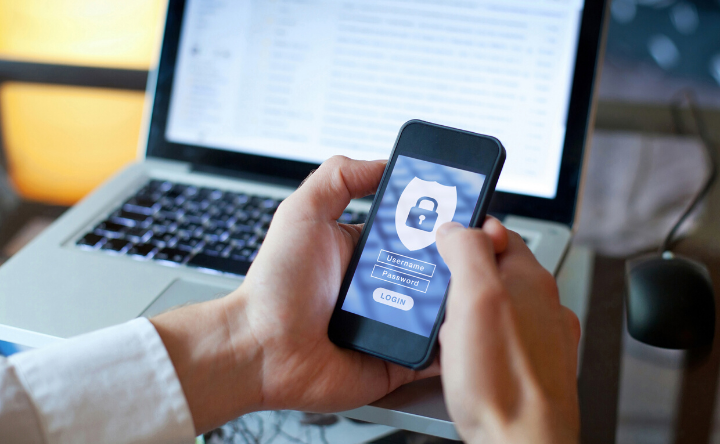Identity access management is crucial to any company’s cybersecurity program. You must verify who has access to what data and to what degree. If identity access management is managed appropriately, companies and organizations will lower the chance of data breaches.
Luckily, there are some best practices you can follow to ensure you have a flawless identity access management program in place. But first, let’s make sure that we know what identity access management exactly is.
What is identity access management and why do you need it?
Identity and access management is a cybersecurity practice aiming to ensure that only appropriate users within your business have access to the resources they need to perform their duties. Your company can manage staff applications with the help of identity access management systems without having to log in as an administrator to every app.
Businesses require identity and access management to boost employee productivity and to make sure only authorized users have access to certain data. It greatly helps in preventing the usage of readily cracked passwords and stolen user credentials, which are frequent ports of entry for malicious hackers who seek to harm your company’s data.
Identity access management best practices
There are some certain identity and access management best practices you can follow to make the process as smooth as possible.
1. Use multi-factor authentication
Verifying user identification has become crucial since it has long been common for attackers to use the user login information to access sensitive data. Since users often have problems keeping their usernames and passwords unique across several accounts, repeat passwords often, and use passwords with little complexity and that are easy to guess, authentication relying just on usernames and passwords is insecure and inconvenient.
The solution? Multi-factor authentication. MFA calls for verification tools that can only the real user can access. It needs many pieces of authentication to validate identity because passwords alone are inadequate due to the reasons provided above. Threat actors won’t be able to impersonate a user with two or more pieces of authorization, and this makes MFA a great cybersecurity and identity access management practice.
To implement MFA properly, you must first establish which services and programs you want to protect, choose the MFA technology you’ll use, and consider the effects it will have on your staff. Overdoing MFA can cause productivity in your staff to take a toll and underdoing it might not provide the protection you need.
2. Embrace the least privilege principle
The least privilege principle restricts users’ access privileges to only what is absolutely necessary for them to complete their duties. The objective of this principle is to lessen the unintentional or malicious potential harm that might come from users having access to more files than they need to.
There are overly privileged accounts in every area of your IT infrastructure. These privileged accounts are a target for hackers and cybercriminals because, if compromised, they give access to moving undetectably around your systems and network. All it takes to obtain total control or steal your most private data is one user who has local administrator rights even though they don’t need them.
According to statistics, 20% of cybercrimes are the result of privilege abuse, and 50% of businesses do not effectively safeguard their data. Employers can lessen security risks and keep productive staff members who can continue to conduct privileged activities and actions under dependable set standards by embracing the least privilege principle.
3. Automate the onboarding process
Repeating the identity and access management process for every new employee that joins your team can be a tiresome and unnecessary practice that will affect your IT team’s productivity. Your IT team can develop and apply a clear framework of the access capabilities a new employee should acquire by automating the onboarding process. This practice is a more realistic method of operation as opposed to giving all users access to the complete company network and then only withdrawing privileges upon request.
Additionally, since internal data misuse would be effectively managed, your company’s IT staff would be free to focus their efforts on combating more serious external security risks. You should always try to automate as many processes as possible to make sure your IT team can shift their focus to protecting your company.
4. Audit resource access regularly
Throughout the course of their employment, users are given access to a variety of resources. That access could be maintained needlessly during the user’s employment if the right auditing mechanisms are not in place. By routinely analyzing access logs you can add a further layer of protection for your company. This can assist you in monitoring user activity and identifying activities made with regard to the account and its resources.
Additionally, access checks verify that any account that is not used anymore has been removed and that users only have the access rights that are necessary. If a user leaves your company, you can make sure that their access privileges were taken away from them by monitoring resource access regularly.
Who should use solutions for identity and access management?
Any modern company that interacts with the digital market can and should employ identity access management. However, there are some types of companies that can benefit from IAM the most. If you are a company that has sensitive data you need to protect, if you have remote employees, and if you use multiple systems to carry out your workload, you should definitely use identity and access management systems.
IAM solutions make it simple for businesses to set restrictions on what users can do and how they can access data. By decreasing the possibility that unauthorized users access critical data, they help avoid data breaches. Data breaches are more of a concern for companies that has remote employees. As you have more and more remote employees, they access corporate resources over insecure networks or devices, something without being aware of it.
Conclusion
At a time when enterprises are targeted by cybercriminals almost every minute, identity and access management is critical. It is also a process that must be continually maintained. It requires continual management because it is a continuous process and an essential component of your infrastructure. Businesses must be prepared to implement new solutions and create reliable procedures based on IAM best practices.
Even if your directory is fully operational, it’s never too late to benefit from best practices to support ongoing management of this critical aspect of your system. You’re still likely to encounter several difficulties while implementing an identity and access management system since it is a tremendous undertaking. But it will be worth all the hassle you had to go through – protecting your company from cyberattacks is mostly about managing user access.


